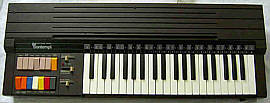 |
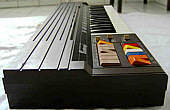 |
This large plastic tablehooter from early 1980th(?) has only envelopeless tooting squarewave organ tones those can be muffled by 3 combinable sound preset switches although it is not full polyphonic. But it has quite nice sounding analogue percussion with a very soft and bassy booming base drum. The accompaniment responds so rapidly that it even accepts trilled notes and also accepts non- chords. You can also combine rhythm with the manual chord mode instead of the automatic accompaniment.
 |
 |
(Note: This keyboard sounds nice, but don't buy one of these so far your only intention is to get a keyboard with faithfully imitated natural instrument sounds. Remember, this is an envelopeless squarewave organ with only simple tooting tones those sound not even remotely like what is written on its switches, though bought with wrong expectation it may disappoint you.)
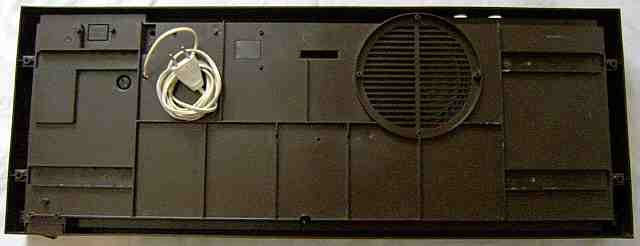 |
 |
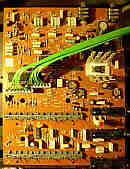 |

|
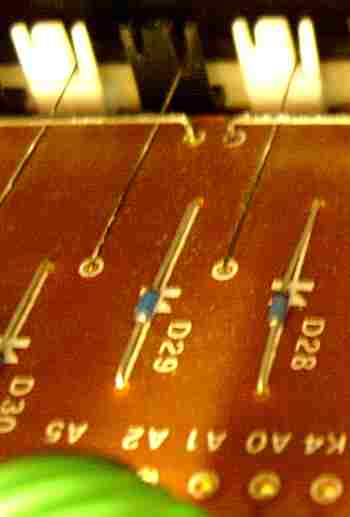
The key contacts are spring wires. |
The rhythms employ analogue percussion which consists of a quite realistic snare drum, a very soft and bassy booming base drum, a cymbal made from white noise and (for "latin") a clave that resembles a high squarewave blip. The resulting rhythm sounds of home organ in a positive way but also gives the impression of a dose of reverb like when someone would play on a distant drum kit somewhere in an open garage. Instead of a "start/ stop" button the rhythm is started by pressing any of these switches. Despite the locking switches and the age of this instrument the 6 preset rhythms can not be combined to form additional rhythms. Instead the rightmost set switch overrides all others. The tempo can be set from quite low to very high, but the speeds of the individual rhythm patterns vary a lot.
The "free chords" switch activates the fingered chord mode, which plays squarewave organ tones in the left keyboard section (basically a key split) together with a monophonic organ bass on the lowest played note. The "s.fingered chords" switch enables the single finger chord. When "memory" is pressed, the current chord or key combination in the left section is held after releasing the keys until any new key is pressed. Great is that these manual organ chord modes work also during rhythm, unless the "automatic" switch is pressed to start the automatic accompaniment. The accompaniment patterns consist of a monophonic e-bass and a polyphonic piano chord (with the notes of all held accompaniment keys). Both employ a capacitor envelope for decay. Great is that the accompaniment itself does not hold any notes, thus it responds so rapidly that it even accepts trilled notes, and instead of standard chords you can play even any weird disharmonic note clusters (polyphony up to 4 notes) those get also chopped by the accompaniment.
A direct predecessor of the HF222 was the Bontempi HF201
and HF202 (without single finger chord?). A 52 keys variant of these
was the HF203 and HF204. (I don't know if these predecessors
were still full polyphonic.) A successor was the HF252 (40 keys,
hardware like Bontempi ES4100?). Also a 49 keys variant of the HF222
with additional preset sound buttons above the keys was released
in 1984.
The operation of the Bontempi HF222 has many similarities with my
(older?) Antonelli Star 2379,
although the latter is full polyphonic.
| removal of these screws voids warranty... | ||
 |
||
|
|